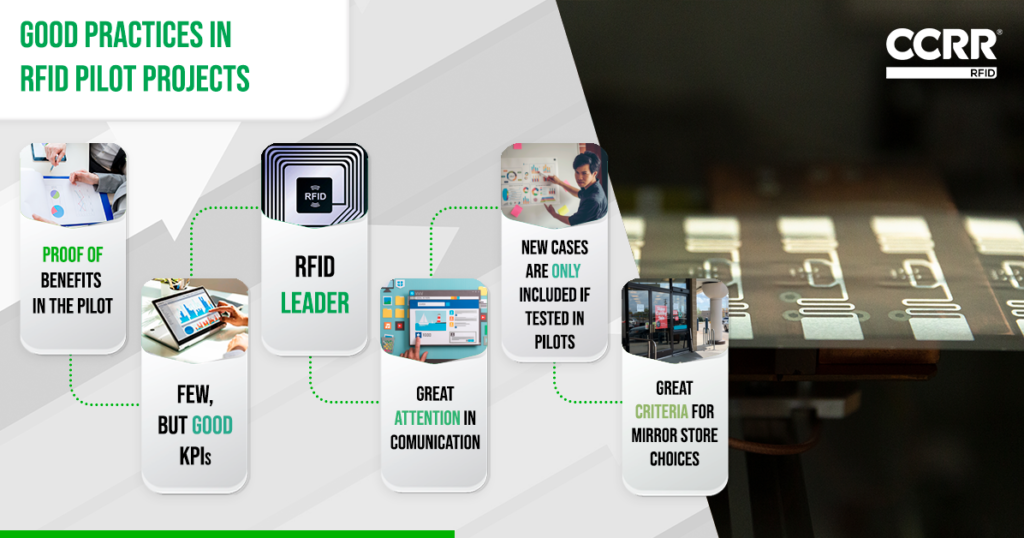CCRR RFID has the purpose of democratizing RFID, and the pilot project is the first important step for organizations that want to implement it.
During the pilot, the benefits and the objectives to be achieved will be validated.
Below is a list of good practices in RFID pilot projects:
● Proof of concept in the pilot: the pilot provides the data to be used in the project’s ROI analysis. If the results obtained are not positive and do not bring considerable benefits, even projecting an expansion to the entire organization, then RFID may not be the best technology for that company.
It is important for the organization to clearly understand and quantify the benefits obtained during the pilot.
● Select few, but good KPIs: the adoption of proper KPIs is the foundation of a good pilot execution. Companies that pursue superior operational productivity usually achieve strong financial outcomes.
Therefore, in pilots, one must have a good supervision of well-executed RFID tasks (the use cases involved). People and processes must be very well controlled to achieve efficiency.
● Choose an RFID Leader: for retail projects, as well as in manufacturing or logistics, the organization must have one person in charge of RFID-related activities. He is the operational resource that will be the reference of the good execution of the processes during the pilot.
● Careful selection of stores for the pilot: specifically for retail projects, the choice of the appropriate stores is crucial. These must meet certain parameters defined by the retailer to accurately represent the stores that will adopt the RFID technology.
Example: store size, product mix, average ticket, target audience, turnover, number of employees, stock size, etc.
● New use cases are only included if tested in pilots: it is quite common that when the organization makes the decision to move forward with RFID technology, numerous needs arise from the various departments within the company. A loss of focus can seriously compromise quality.
Therefore, one should always think of starting simple (the lowest possible investment, to get the highest return), and as the new use cases mature, new pilots should be done to test them.
Only use cases with proven ROI should be part of the Rollout.
● Great attention to communication: carry out a broad information campaign regarding the new processes within the company. Tools such as banners, applications, videos, audios, internal e-mails, intranet, etc., must be used to guarantee the creation of the RFID culture in the organization.



